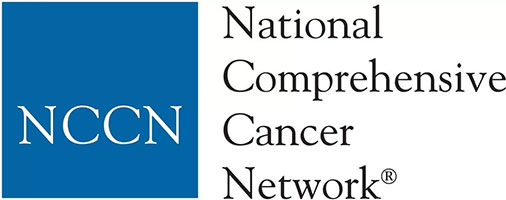Patient Search
 |
 |
|
KaCrole Higgins was diagnosed with breast cancer in 2020. “In May 2020, I found a lump in my breast. I cried. By June, it was diagnosed as breast cancer, triple positive, stage 1A. While getting this cancer diagnosis was devastating, it also became an opportunity. Suddenly, the cancer gave me clarity. It gave me clarity about what was important, what was good in my life, what was toxic in my life, and what I needed to do.” Click below to read more of KaCrole’s story |
If Landon Ryan had been diagnosed with bilateral retinoblastoma 10, 20 or 30 years ago, she might not be here today with nearly perfect vision.Thanks to recent improvements in the treatment for this rare form of cancer that almost exclusively affects children under the age of 5, the diagnosis had the power to change Landon’s life when she was 11 months old, but not to take it — or her eyesight. Click below to learn more about Landon and her story. https://momentum.vicc.org/2022/04/brighter-outlook/ |
A Study of Treatment for Medulloblastoma Using Sodium Thiosulfate to Reduce Hearing Loss
This phase III trial tests two hypotheses in patients with low-risk and average-risk medulloblastoma. Medulloblastoma is a type of cancer that occurs in the back of the brain. The term, risk, refers to the chance of the cancer coming back after treatment. Subjects with low-risk medulloblastoma typically have a lower chance of the cancer coming back than subjects with average-risk medulloblastoma. Although treatment for newly diagnosed average-risk and low-risk medulloblastoma is generally effective at treating the cancer, there are still concerns about the side effects of such treatment. Side effects or unintended health conditions that arise due to treatment include learning difficulties, hearing loss or other issues in performing daily activities. Standard therapy for newly diagnosed average-risk or low-risk medulloblastoma includes surgery, radiation therapy, and chemotherapy (including cisplatin). Cisplatin may cause hearing loss as a side effect. In the average-risk medulloblastoma patients, this trial tests whether the addition of sodium thiosulfate (STS) to standard of care chemotherapy and radiation therapy reduces hearing loss. Previous studies with STS have shown that it may help reduce or prevent hearing loss caused by cisplatin. In the low-risk medulloblastoma patients, the study tests whether a less intense therapy (reduced radiation) can provide the same benefits as the more intense therapy. The less intense therapy may cause fewer side effects. Radiation therapy uses high energy x-rays to kill tumor cells and shrink tumors. Cisplatin is in a class of medications known as platinum-containing compounds. It works by killing, stopping or slowing the growth of cancer cells. The overall goals of this study are to see if giving STS along with standard treatment (radiation therapy and chemotherapy) will reduce hearing loss in medulloblastoma patients and to compare the overall outcome of patients with medulloblastoma treated with STS to patients treated without STS on a previous study in order to make sure that survival and recurrence of tumor is not worsened.
Not Available
III
Not Available
NCT05382338
VICC-NTPED23124
A Study to Test the Addition of the Drug Cabozantinib to Chemotherapy in Patients With Newly Diagnosed Osteosarcoma
This phase II/III trial tests the safety, side effects, and best dose of the drug cabozantinib in combination with standard chemotherapy, and to compare the effect of adding cabozantinib to standard chemotherapy alone in treating patients with newly diagnosed osteosarcoma. Cabozantinib is in a class of medications called kinase inhibitors which block protein signals affecting new blood vessel formation and the ability to activate growth signaling pathways. This may help slow the growth of tumor cells. The drugs used in standard chemotherapy for this trial are methotrexate, doxorubicin, and cisplatin (MAP). Methotrexate stops cells from making DNA and may kill tumor cells. It is a type of antimetabolite. Doxorubicin is in a class of medications called anthracyclines. It works by slowing or stopping the growth of tumor cells in the body. Cisplatin is in a class of medications known as platinum-containing compounds. It works by killing, stopping or slowing the growth of tumor cells. Adding cabozantinib to standard chemotherapy may work better in treating newly diagnosed osteosarcoma.
Not Available
II/III
Not Available
NCT05691478
VICC-NTPED23198
Safety and Efficacy of ALLO-501A Anti-CD19 Allogeneic CAR T Cells in Adults with Relapsed/Refractory Large B Cell Lymphoma, Chronic Lymphocytic Leukemia and Small Lymphocytic Lymphoma (ALPHA2)
This is a single-arm, open label, multicenter Phase 1/2 study evaluating ALLO-501A in adult subjects with R/R LBCL and CLL/SLL. The purpose of the ALPHA2 study is to assess the safety, efficacy, and cell kinetics of ALLO-501A in adults with relapsed or refractory large B-cell lymphoma and assess the safety of ALLO-501A in adults with relapsed or refractory chronic lymphocytic leukemia/small lymphocytic lymphoma (CLL/SLL) after a lymphodepletion regimen comprising fludarabine, cyclophosphamide, and ALLO-647.
Not Available
II
Jallouk, Andrew
NCT04416984
VICC-DTCTT24008
Measuring if Immunotherapy Plus Chemotherapy is Better Than Chemotherapy Alone for Patients With Aggressive Poorly Differentiated Sarcomas
This phase III trial compares the effect of immunotherapy (pembrolizumab) plus chemotherapy (doxorubicin) to chemotherapy (doxorubicin) alone in treating patients with dedifferentiated liposarcoma (DDLPS), undifferentiated pleomorphic sarcoma (UPS) or a related poorly differentiated sarcoma that has spread from where it first started (primary site) to other places in the body (metastatic) or that cannot be removed by surgery (unresectable). Doxorubicin is in a class of medications called anthracyclines. Doxorubicin damages the cell's deoxyribonucleic acid (DNA) and may kill tumor cells. It also blocks a certain enzyme needed for cell division and DNA repair. A monoclonal antibody is a type of protein that can bind to certain targets in the body, such as molecules that cause the body to make an immune response (antigens). Immunotherapy with monoclonal antibodies, such as pembrolizumab, may help the body's immune system attack the cancer, and may interfere with the ability of tumor cells to grow and spread. Adding immunotherapy (pembrolizumab) to the standard chemotherapy (doxorubicin) may help patients with metastatic or unresectable DDLPS, UPS or a related poorly differentiated sarcoma live longer without having disease progression.
Not Available
III
Davis, Elizabeth
NCT06422806
VICC-NTSAR24139
A Study to Assess Adverse Events of Intravenously (IV) Infused ABBV-383 in Adult Participants With Relapsed or Refractory Multiple Myeloma
Multiple Myeloma (MM) is a cancer of the blood's plasma cells ( blood cell). The cancer is typically found in the bones and bone marrow (the spongy tissue inside of the bones) and can cause bone pain, fractures, infections, weaker bones, and kidney failure. Treatments are available, but MM can come back (relapsed) or may not get better (refractory) with treatment. This is a study to determine adverse events and change in disease symptoms of ABBV-383 in adult participants with relapsed/refractory (R/R) MM.
ABBV-383 is an investigational drug being developed for the treatment of R/R Multiple Myeloma (MM). This study is broken into 3 Arms; Arm A (Parts 1 and 2), Arm B and Arm C. Arm A includes 2 parts: step-up dose optimization (Part 1) and dose expansion (Part 2). In Part 1, different level of step-up doses are tested followed by the target dose of ABBV-383. In Part 2, the step-up dose identified in Part 1 (Dose A) will be used followed by the target dose A of ABBV-383. In Arm B a flat dose of ABBV-383 will be tested. "In Arm C, the step-up dose identified in Arm A will be used followed by the target dose of ABBV-383 to investigate outpatient administration of ABBV-383. Around 180 adult participants with relapsed/refractory multiple myeloma will be enrolled at approximately 40 sites across the world.
Participants will receive ABBV-383 as an infusion into the vein in 28 day cycles for approximately 3 years.
There may be higher treatment burden for participants in this trial compared to their standard of care. Participants will attend regular visits during the study at a hospital or clinic. The effect of the treatment will be checked by medical assessments, blood tests, checking for side effects and questionnaires.
ABBV-383 is an investigational drug being developed for the treatment of R/R Multiple Myeloma (MM). This study is broken into 3 Arms; Arm A (Parts 1 and 2), Arm B and Arm C. Arm A includes 2 parts: step-up dose optimization (Part 1) and dose expansion (Part 2). In Part 1, different level of step-up doses are tested followed by the target dose of ABBV-383. In Part 2, the step-up dose identified in Part 1 (Dose A) will be used followed by the target dose A of ABBV-383. In Arm B a flat dose of ABBV-383 will be tested. "In Arm C, the step-up dose identified in Arm A will be used followed by the target dose of ABBV-383 to investigate outpatient administration of ABBV-383. Around 180 adult participants with relapsed/refractory multiple myeloma will be enrolled at approximately 40 sites across the world.
Participants will receive ABBV-383 as an infusion into the vein in 28 day cycles for approximately 3 years.
There may be higher treatment burden for participants in this trial compared to their standard of care. Participants will attend regular visits during the study at a hospital or clinic. The effect of the treatment will be checked by medical assessments, blood tests, checking for side effects and questionnaires.
Not Available
I
Not Available
NCT05650632
VICC-DTPCL23010P
A Study With Tovorafenib (DAY101) as a Treatment Option for Progressive, Relapsed, or Refractory Langerhans Cell Histiocytosis
This phase II trial tests the safety, side effects, best dose and activity of tovorafenib (DAY101) in treating patients with Langerhans cell histiocytosis that is growing, spreading, or getting worse (progressive), has come back (relapsed) after previous treatment, or does not respond to therapy (refractory). Langerhans cell histiocytosis is a type of disease that occurs when the body makes too many immature Langerhans cells (a type of white blood cell). When these cells build up, they can form tumors in certain tissues and organs including bones, skin, lungs and pituitary gland and can damage them. This tumor is more common in children and young adults. DAY101 may stop the growth of cancer cells by blocking some of the enzymes needed for cell growth. Using DAY101 may be effective in treating patients with relapsed or refractory Langerhans cell histiocytosis.
Not Available
II
Not Available
NCT05828069
VICC-NTPED24012
A Study Using Nivolumab, in Combination With Chemotherapy Drugs to Treat Nasopharyngeal Carcinoma (NPC)
This phase II trial tests effects of nivolumab in combination with chemotherapy drugs prior to radiation therapy patients with nasopharyngeal carcinoma (NPC). Immunotherapy with monoclonal antibodies, such as nivolumab, may help the body's immune system attack the cancer, and may interfere with the ability of tumor cells to grow and spread. Chemotherapy drugs, such as gemcitabine and cisplatin, work in different ways to stop the growth of tumor cells, either by killing the cells, by stopping them from dividing, or by stopping them from spreading. Radiation therapy uses high energy x-rays, particles, or radioactive seeds to kill cancer cells and shrink tumors. Researchers want to find out what effects, good and/or bad, adding nivolumab to chemotherapy has on patients with newly diagnosed NPC. In addition, they want to find out if children with NPC may be treated with less radiation therapy and whether this decreases the side effects of therapy.
Not Available
II
Not Available
NCT06064097
VICC-NTPED24105
Triptorelin for the Prevention of Ovarian Damage in Adolescents and Young Adults With Cancer
Ovarian
Ovarian
This phase III trial compares the effect of giving triptorelin vs no triptorelin in preventing ovarian damage in adolescents and young adults (AYAs) with cancer receiving chemotherapy with an alkylating agents. Alkylating agents are part of standard chemotherapy, but may cause damage to the ovaries. If the ovaries are not working well or completely shut down, then it will be difficult or impossible to get pregnant in the future. Triptorelin works by blocking certain hormones and causing the ovaries to slow down or pause normal activity. The triptorelin used in this study stays active in the body for 24 weeks or about 6 months after a dose is given. After triptorelin is cleared from the body, the ovaries resume normal activities. Adding triptorelin before the start of chemotherapy treatment may reduce the chances of damage to the ovaries.
Ovarian
III
Davis, Elizabeth
NCT06513962
COGALTE2131
MOONRAY-01, A Study of LY3962673 in Participants With KRAS G12D-Mutant Solid Tumors
Multiple Cancer Types
The main purpose of this study is to assess safety \& tolerability and antitumor activity of LY3962673 as monotherapy and in combination with other chemotherapy agents in participants with KRAS G12D-mutant advanced solid tumor types. The study is expected to last approximately 5 years.
Colon,
Esophageal,
Gastric/Gastroesophageal,
Gastrointestinal,
Lung,
Non Small Cell,
Pancreatic,
Phase I,
Rectal,
Uterine
I
Cardin, Dana
NCT06586515
VICC-DTGIT24002P
Expanded Access Protocol (EAP) for Nonconforming (NC) Afami-cel
Sarcoma
Sarcoma
The purpose of this expanded access protocol (EAP) is to provide controlled access to Afamitresgene autoleucel, suspension for intravenous infusion that does not meet the commercial release specification (NC afami-cel). This EAP will be conducted at authorized treatment centers where TECELRA is being administered and where the EAP is approved to be conducted. Patients who are prescribed TECELRA , sign the informed consent form, and meet all entry criteria will be eligible to participate in this protocol.
Sarcoma
N/A
Keedy, Vicki
NCT06617572
VICCSAR24510


